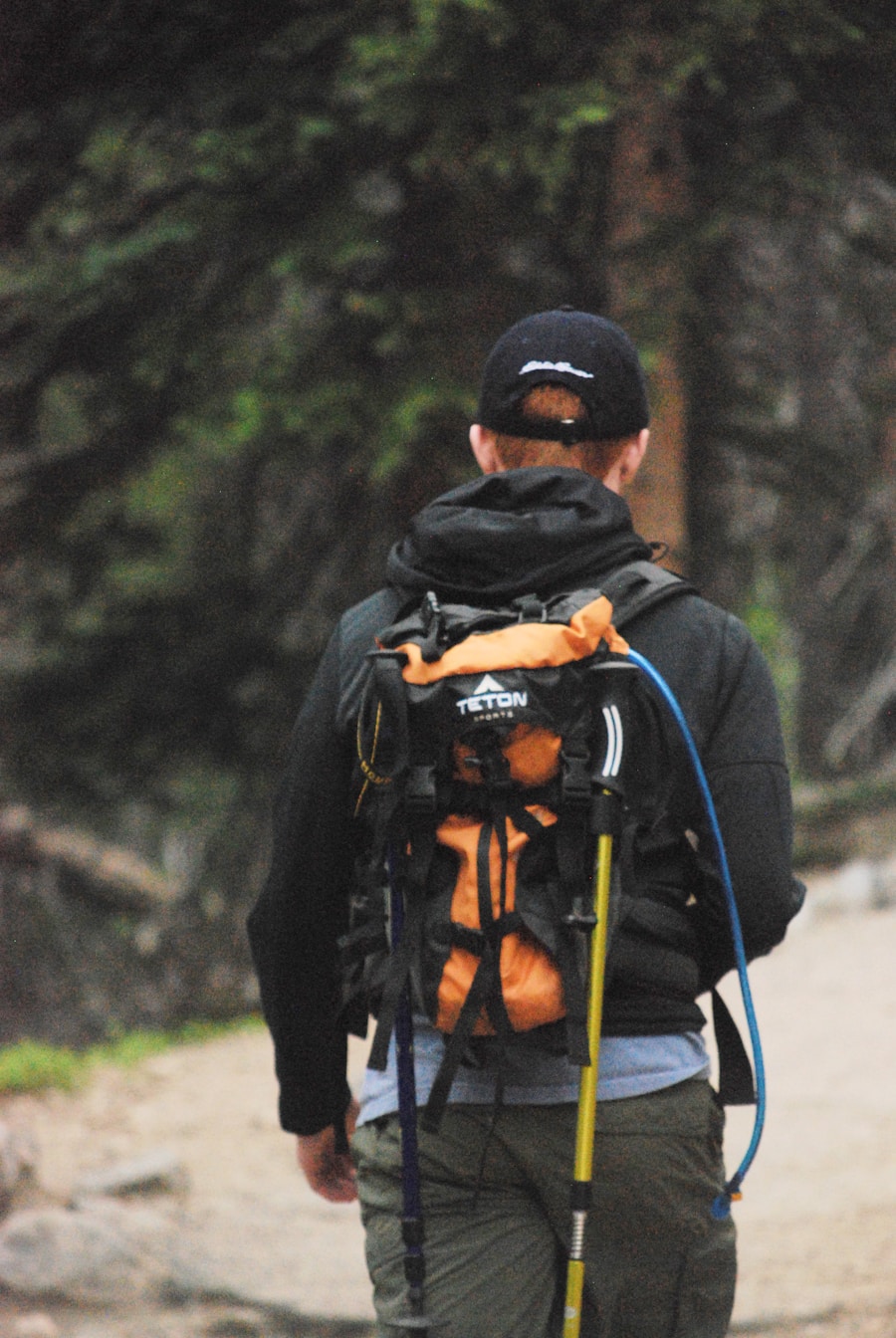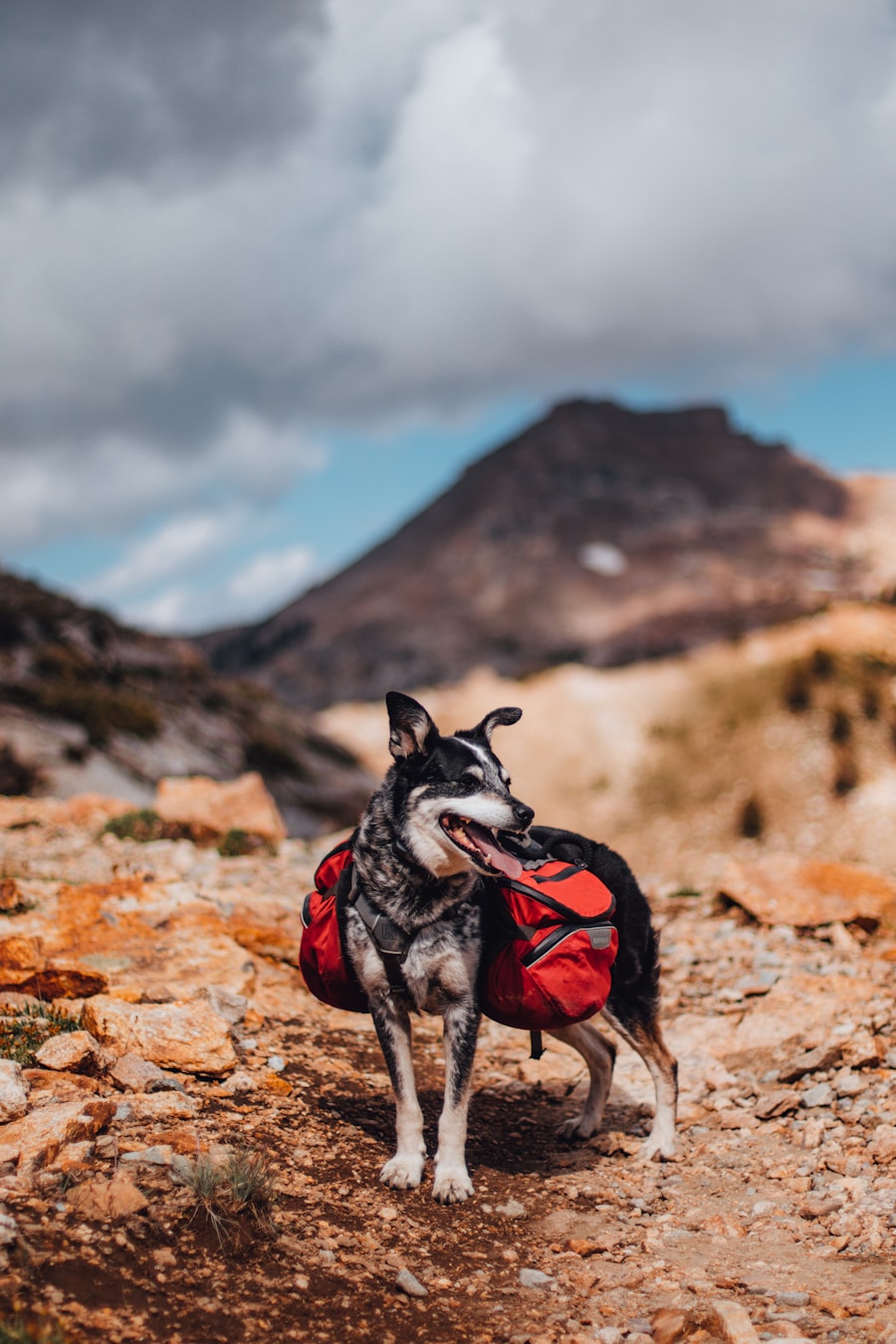Footwear is arguably the most critical component of any hiking ensemble. The right pair of hiking boots or shoes can make the difference between an enjoyable trek and a painful ordeal. When selecting footwear, it is essential to consider the terrain you will be traversing.
For rocky, uneven trails, a sturdy pair of hiking boots with excellent ankle support is advisable. These boots often feature rugged outsoles designed to provide traction on slippery surfaces, which is crucial for maintaining stability and preventing slips and falls. Brands like Merrell and Salomon offer a range of options that cater to various hiking conditions, ensuring that adventurers can find the perfect fit for their needs.
In addition to support and traction, breathability and waterproofing are vital factors to consider. Hiking in wet conditions or crossing streams can lead to soggy socks and blisters if your footwear isn’t adequately waterproofed. Many modern hiking shoes incorporate breathable materials that wick moisture away while keeping your feet dry.
For instance, Gore-Tex technology is commonly used in many hiking boots to provide a waterproof barrier without sacrificing breathability. It’s also important to break in your footwear before embarking on a long hike; this helps prevent blisters and ensures that your boots mold comfortably to your feet.
Key Takeaways
- Good hiking footwear is essential for a comfortable and safe hike, providing support and protection for your feet.
- Dress in layers and choose moisture-wicking clothing to stay comfortable and protected from the elements.
- A well-fitted backpack with padded straps and multiple compartments will make it easier to carry your essentials on the trail.
- Navigation tools such as a map, compass, or GPS device are crucial for finding your way and staying on course during a hike.
- Staying hydrated is key to maintaining energy and health on the trail, so bring plenty of water and consider a hydration pack for easy access.
Clothing: Dressing for Comfort and Protection
The clothing you choose for hiking plays a significant role in your overall comfort and protection from the elements. Layering is a fundamental principle in outdoor clothing, allowing you to adapt to changing weather conditions throughout your hike. The base layer should be moisture-wicking, made from materials like merino wool or synthetic fabrics that draw sweat away from your skin.
This helps regulate body temperature and keeps you dry, which is essential for comfort during physical exertion. The middle layer serves as insulation, trapping heat while still allowing moisture to escape. Fleece jackets or lightweight down vests are popular choices for this layer, providing warmth without adding excessive bulk.
Finally, the outer layer should be weather-resistant, protecting you from wind, rain, or snow. Look for jackets made from breathable materials with waterproof capabilities, such as those featuring the latest advancements in fabric technology like eVent or H2No. Additionally, consider the importance of sun protection; long-sleeved shirts and wide-brimmed hats can shield your skin from harmful UV rays, especially during long hikes in exposed areas.
Backpack: Carrying Your Essentials with Ease

A well-designed backpack is essential for any hiker looking to carry their gear comfortably and efficiently. The size of the backpack will depend on the length of your hike; day hikes typically require a smaller pack, while multi-day treks necessitate larger backpacks with more storage capacity. When selecting a backpack, pay attention to the fit and adjustability features.
A good backpack should have padded shoulder straps, a hip belt for weight distribution, and an adjustable torso length to ensure comfort during long hours on the trail. Organizational features are also crucial in a backpack. Multiple compartments allow for easy access to essentials like snacks, maps, and first aid kits without having to rummage through the entire pack.
Some backpacks come equipped with hydration reservoirs or pockets specifically designed for water bottles, ensuring that hydration is easily accessible while on the move. Additionally, consider packs with external attachment points for trekking poles or sleeping bags if you plan on venturing into more remote areas.
Navigation Tools: Finding Your Way on the Trail
| Navigation Tool | Accuracy | Weight | Cost |
|---|---|---|---|
| Compass | High | Light | Low |
| GPS Device | Very High | Medium | High |
| Map and Compass | High | Light | Low |
| Smartphone App | Medium | Light | Varies |
Navigating through unfamiliar terrain can be daunting without the right tools at your disposal. Traditional maps and compasses remain invaluable resources for hikers who prefer a more hands-on approach to navigation. A topographic map provides detailed information about elevation changes, terrain features, and potential hazards along the trail.
Learning how to read these maps effectively can enhance your hiking experience by allowing you to anticipate challenges and plan your route accordingly. In addition to traditional navigation tools, modern technology has introduced GPS devices and smartphone applications that can significantly aid in navigation. Many hiking apps offer offline maps, allowing users to download trail information before heading out into areas with limited cell service.
These apps often include features such as waypoints, trail reviews, and real-time tracking, which can enhance safety and confidence while navigating through complex landscapes. However, it’s essential to remember that technology can fail; thus, having a backup plan with traditional navigation tools is always wise.
Hydration: Staying Fueled and Healthy on the Trail
Hydration is a critical aspect of hiking that should never be overlooked. Dehydration can lead to fatigue, dizziness, and even more severe health issues if not addressed promptly. It’s essential to drink water regularly throughout your hike rather than waiting until you feel thirsty.
A general guideline is to consume about half a liter of water per hour during moderate activity in moderate temperatures; however, this may vary based on individual needs and environmental conditions. Carrying sufficient water is vital, and there are several options available for hikers. Hydration reservoirs are popular among many outdoor enthusiasts; these systems allow you to sip water through a tube without having to stop frequently.
Alternatively, water bottles are also effective but may require more frequent stops for refills. In areas where water sources are available, consider using water purification tablets or filters to ensure that you have access to safe drinking water without carrying excessive weight.
First Aid Kit: Being Prepared for Minor Injuries

Accidents can happen even on well-trodden trails, making it essential to carry a first aid kit tailored for hiking emergencies. A basic first aid kit should include adhesive bandages in various sizes for cuts and scrapes, antiseptic wipes for cleaning wounds, gauze pads for larger injuries, and medical tape for securing dressings. Additionally, including pain relievers such as ibuprofen or acetaminophen can help manage discomfort during your hike.
Beyond the basics, consider adding items specific to your needs or potential risks associated with your hiking environment. For example, if you’re hiking in areas known for insect activity, including antihistamines or insect bite relief cream can be beneficial. If you have specific medical conditions or allergies, ensure that your first aid kit contains any necessary medications or treatments tailored to those needs.
Regularly check and replenish your first aid kit before each hike to ensure that all items are in good condition and within their expiration dates.
Emergency Supplies: Planning for the Unexpected
While most hikes go according to plan, it’s wise to prepare for unexpected situations that may arise during your adventure. Emergency supplies can make a significant difference in ensuring safety when faced with unforeseen circumstances such as sudden weather changes or getting lost on the trail. A whistle is an essential item; it can be used to signal for help if you find yourself in distress or separated from your group.
A multi-tool or knife can also prove invaluable in various situations—from preparing food to making repairs on gear or first aid applications. Additionally, carrying a lightweight emergency blanket can provide warmth if you become stranded overnight or need protection from the elements. Fire-starting materials such as waterproof matches or a lighter are crucial for warmth and signaling as well; being able to start a fire can be a lifesaver in cold conditions.
Personal Items: Bringing the Extras for Comfort
While the essentials are crucial for any hike, personal items can significantly enhance your overall experience by providing comfort and convenience along the way. Consider packing lightweight items such as a small travel pillow or a compact camping chair if you plan on taking breaks during your hike; these can make resting more enjoyable after hours of walking. A lightweight blanket or shawl can also provide warmth during chilly evenings spent at camp.
Snacks are another personal item that can greatly affect your energy levels throughout the hike. High-energy foods like trail mix, energy bars, or jerky are excellent choices due to their portability and nutritional value. Additionally, bringing along a small book or journal can provide entertainment during downtime at camp or serve as a way to document your experiences on the trail.
Personal items may seem trivial compared to gear essentials; however, they contribute significantly to an enjoyable hiking experience by enhancing comfort and morale during long treks into nature’s beauty.
If you are planning a hiking trip, it is important to consider the best time to visit your destination. For example, if you are thinking about hiking in Chile, you may want to check out this article on the best time to travel to Chile. This guide will provide you with valuable information on when to visit Chile for the optimal hiking experience. It is always helpful to do some research before embarking on your outdoor adventure to ensure you are well-prepared for the conditions you may encounter.
FAQs
What should I bring hiking?
– When going hiking, it is important to bring essential items such as water, food, navigation tools, first aid kit, appropriate clothing, and a backpack to carry everything.
How much water should I bring when hiking?
– It is recommended to bring at least 2 liters of water per person for a day hike. In hot or strenuous conditions, you may need to bring more.
What kind of food should I bring when hiking?
– Pack lightweight, high-energy snacks such as trail mix, energy bars, and dried fruits. Also, bring a packed lunch if you plan to be out for an extended period.
What navigation tools should I bring when hiking?
– Essential navigation tools include a map of the area, a compass, and a GPS device if available. It is important to know how to use these tools before heading out on a hike.
What should I include in a first aid kit for hiking?
– A basic first aid kit for hiking should include items such as bandages, adhesive tape, antiseptic wipes, pain relievers, blister treatment, and any personal medications.
What clothing should I wear when hiking?
– Wear moisture-wicking and breathable clothing, including a moisture-wicking base layer, insulating layer, and a waterproof and windproof outer layer. Also, wear appropriate footwear and socks.
What else should I bring when hiking?
– Other important items to bring when hiking include a headlamp or flashlight, a multi-tool or knife, sunscreen, insect repellent, and a whistle for emergencies.
